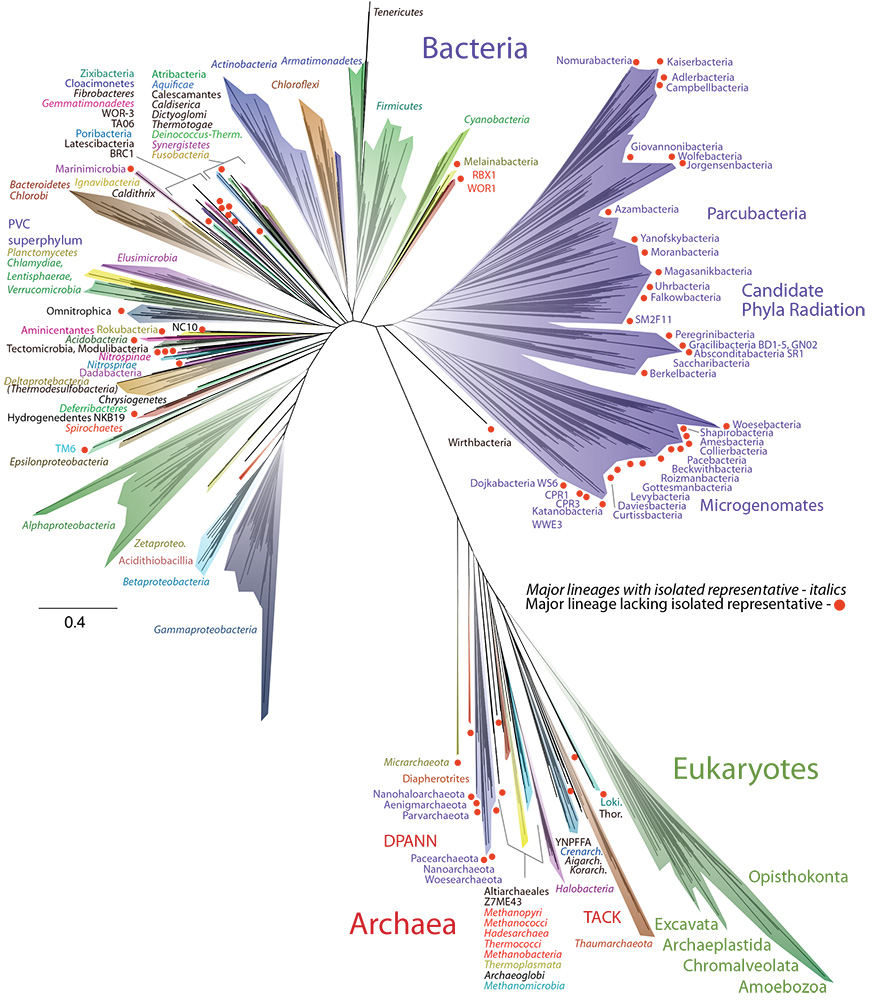
An artistic representation of the tree of life, with the many groups of bacteria on the left, the uncultivable bacteria at upper right (purple), and the Archaea and eukaryotes (green) – which includes humans – at the lower right. (Graphic by Zosia Rostomian, Lawrence Berkeley National Laboratory)
The tree of life, which depicts how life has evolved and diversified on the planet, is getting a lot more complicated.
Researchers at UC Berkeley, who have discovered more than 1,000 new types of bacteria and Archaea over the past 15 years lurking in Earth’s nooks and crannies, have dramatically rejiggered the tree to account for these microscopic new life forms.
“The tree of life is one of the most important organizing principles in biology,” said Jill Banfield, a UC Berkeley professor of earth and planetary science and environmental science, policy and management. “The new depiction will be of use not only to biologists who study microbial ecology, but also biochemists searching for novel genes and researchers studying evolution and earth history.”
Much of this microbial diversity remained hidden until the genome revolution allowed researchers like Banfield to search directly for their genomes in the environment, rather than trying to culture them in a lab dish. Many of the microbes cannot be isolated and cultured because they cannot live on their own: they must beg, borrow or steal stuff from other animals or microbes, either as parasites, symbiotic organisms or scavengers.
The new tree, published online April 11 in the new journal Nature Microbiology, reinforces once again that the life we see around us – plants, animals, humans and other so-called eukaryotes – represent a tiny percentage of the world’s biodiversity.
RELATED INFORMATION
- A new view of the tree of life (Nature Microbiology)
- Newfound groups of bacteria are mixing up the tree of life (June 2015)
